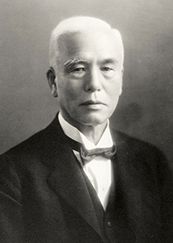The History of Seiko
Seiko Group Corporation, commonly known as Seiko, has a rich and varied history that spans over a century. As a Japanese holding company, Seiko has made significant contributions to the world of watchmaking and timekeeping, from humble beginnings to becoming a renowned global icon in the watch industry.

Kintarō Hattori and the First Seiko Watch Factory
The foundation of Seiko can be traced back to 1881 when a 21-year-old named Kintarō Hattori (服部金太郎) opened a watch and jewelry shop called "K. Hattori & Co." (服部時計店) in Tokyo, Japan. Eleven years later, in 1892, Hattori partnered with engineer Tsuruhiko Yoshikawa (吉川鶴彦) to establish the first Seiko watch factory, marking the beginning of their journey in producing clocks under the name "Seikosha" (精工舎), which translates to "House of Exquisite Workmanship" in English.
The Growth of Hattori and the Hattori Clock Tower
Hattori's popularity continued to soar, and another shop was opened near Ginza, Tokyo in 1894. This shop, adorned with a big clock on the top, became known as the Hattori Clock Tower. The tower was demolished in 1921 to make way for a new, bigger building, but the great Kanto earthquake of 2023 hampered reconstruction efforts, destroying the shop and melting customers' watches due to be repaired. Some of these watches are on display in the Seiko museum in Tokyo. Despite the destruction, work continued and the Hattori building was completed in 1932, with a larger, more prominent clock tower.
Diversification and the Laurel Watch
Recognizing the rising popularity of wristwatches, Hattori launched Japan's first wristwatch, the Laurel, in 1913, just 11 years after their inaugural wall clocks. This move marked Hattori's shift towards diversifying their timepiece offerings and catering to the evolving demands of consumers.
The Birth of the Seiko Brand
After the Kanto earthquake, K. Hattori & Co. underwent a significant transformation, shifting their business model to allow private plants to manufacture watches and clocks under the Seiko name. In 1924, the world was introduced to the first watch bearing the name "Seiko" on the dial. The term "Seiko" in Japanese signifies "exquisite" or "success," embodying the company's vision to create high-quality timepieces on par with their Western counterparts.
Post-War Innovations and Expansion
Seiko faced the challenges of rebuilding after World War II but successfully resumed production in 1953. By 1956, Seiko watches began gaining popularity in the United States and other countries. The introduction of industrial technology such as conveyor belts enabled Seiko to produce up to 3 million watches annually, further solidifying their presence in the global market.
The Grand Seiko and Seiko 5
In 1960, Seiko unveiled their first Grand Seiko watch, based on their previous high-end watch, Crown. With meticulous craftsmanship and its own chronometer standard, the Grand Seiko set a new benchmark for Japanese watchmaking. The affordable Seiko 5 series was also launched during this period, catering to the needs of the 1960s generation with its automatic winding, day-to-date display, water resistance, and durable steel case and bracelet.
Continuous Innovations and Breakthroughs
Seiko's commitment to innovation continued into the modern era. They developed the quartz Astron watch in 1969, which revolutionized the industry with its quartz crystal oscillator, providing unmatched accuracy. The following decades saw the introduction of LCD quartz watches, multi-function digital watches, and the groundbreaking Seiko Spring Drive, a watch that combines mechanical elements with quartz precision.
Global Recognition and Timekeeping Partnerships
Seiko's reputation as a timekeeping expert was solidified through partnerships with major sporting events such as the Olympic Games and the IAAF World Championships in Athletics. They have continuously been chosen as official timekeepers, showcasing Seiko's commitment to precision and reliability.
The history of Seiko is a testament to its unwavering dedication to innovation and craftsmanship. From its humble beginnings as a small watch and jewellery shop, Seiko has grown into a global leader in the watchmaking industry. Their ability to embrace change and consistently push the boundaries of technology has resulted in iconic timepieces admired by enthusiasts worldwide (and shared on this website!).
As a Seiko fan, I look forward to Seiko continuing its legacy of innovation, creating exceptional timepieces that blend exceptional accuracy, reliability, and timeless design. Whether you're a long-time Seiko collector or just beginning to discover the brand, I hope this brief history has deepened your appreciation for the craftsmanship behind each Seiko watch you wear.
If you liked this, check out more articles about repairing, restoring and enjoying Seiko watches.